China's Tibetan question: is there a solution?
Officially, the Tibetan issue is a little over sixty years old. The countdown begins with the invasion of the Chinese People’s Liberation Army into the territory of a virtually independent Tibet in 1950. From now on, radical political, economic, and cultural changes radically transform the very nature of social life in Tibet, virtually unchanged for more than a millennium, forcing all active adherents of preserving traditions, headed by the Tibetan spiritual hierarchy to emigrate, and to the world community in the face of Western countries and regional opponents of China give reason to argue about the accomplished act of occupation of a sovereign state. In fact, story the Tibetan question is much longer and goes into the depths of the centuries-old relations between the two closest neighbors - Tibet and China, more precisely, the states that existed on its territory.
The origins of Tibetan theocracy
By the way, the political system that existed in the region prior to its seizure by the People’s Liberation Army of the People's Republic of China, Tibet, is obliged to China (more precisely, one of the imperial dynasties). When the rule of the Yuan dynasty was established in China in the 13th century, representatives of the latter drew attention to the nearest western neighbor of the empire, Tibet, which by that time was split into separate possessions. Of course, the Yuan dynasty can hardly be called Chinese - by its ethnic origin, the emperors went back to the Mongols and represented one of the branches of Chingizids, however, since China was repeatedly ruled by foreign dynasties of Jurchen, Mongolian, Manchu origin and the years of these dynasties, it is impossible to cross out the country’s history, there is every reason call the Yuan dynasty precisely Chinese. So, Emperor Khubilai, the most famous representative of the Yuan dynasty, who ruled China in 1294-1307, appointed the head of the Tibetan Buddhist school Sakya Pagba-Lama the actual head of the provinces of U, Kam and Tsang, which formed the territory of Tibet. Pagba-lama, the spiritual master of Kubilai, who converted the emperor to Buddhism, thereby became the first theocratic ruler of Tibet. A system in which both spiritual and secular power in Tibet were concentrated in the hands of the head of a Buddhist school existed for more than six centuries.
In 1578, the Mongol khan Altyn-khan preferred the younger than Sakya school of Tibetan Buddhism - Gelugpa. The head of the Gelugpa school Sonam Gyatso received the title of Dalai Lama from Khan, thereby opening the first page of the centuries-old rule over Tibet of the Dalai Lamas, who are considered living embodiments of the bodhisattva Avalokiteshvara (bodhisattva is a man who aspires to become a Buddha and renounced the world in order to save the world in the name of salvation from the “wheel of rebirth”).
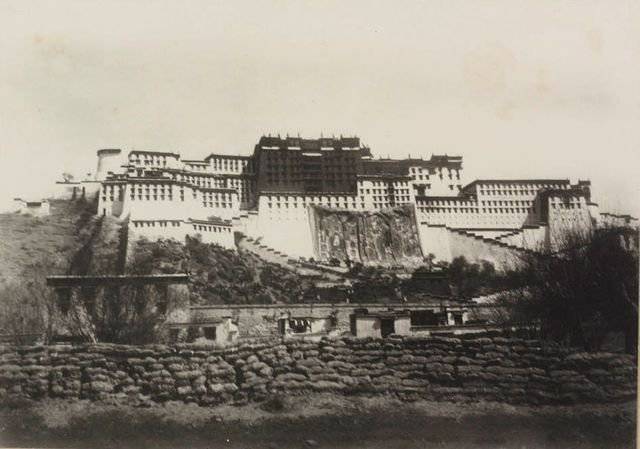
For several centuries of rule in Tibet by the Dalai Lamas, life here was practically conserved. Social, economic relations, not to mention the spiritual, cultural component of the life of Tibetan society, remained unchanged. The privileged part of the population was considered to be the clergy, especially its highest category - “tulku”, that is, “reincarnates” of Buddhist bodhisattvas, the founders of theological schools, famous monks. In 1717, the Chinese Qing dynasty, also of foreign, Manchu origin, like Yuan practicing Buddhism, was forced to enter Chinese troops in Tibet, which performed the function of defending the country from the raids of the Mongol khans. Since then, for two hundred years, the Chinese governor and a small military garrison remained in Tibet. Periodically, the Chinese intervened to restore political order in Tibet, to prevent Mongol attacks from the north or Nepalese Gurkhas from the south, but in internal affairs Tibet remained virtually completely independent state.
Until the end of the 19th century, Tibet, which was in relative isolation from the rest of the world, functioned "in itself", maintaining close ties only with China and the nearest regions, whose population professed Tibetan Buddhism - with the Mongol khanates, the Himalayan kingdoms and the principalities of Ladakh, Zaskar, Mustang, Bhutan, Sikkim, etc. The situation has changed with the growth of interest in the region from the largest world powers - Britain and the Russian Empire. For Great Britain, which by that time had seized the Indian subcontinent, Tibet was considered as a strategically important outpost for further penetration into China and Central Asia. The Russian Empire, in turn, tried to resist this, using as its agents of influence in Tibet, including Russian subjects of Buryat and Oirat-Kalmyk origin, practicing Buddhism.
In the end, the opposing sides at several conferences on Tibetan issues in the early twentieth century recognized the sovereignty of the Chinese Qing Empire over the Tibetan region and renounced their claims to its territory. Although, of course, both the British and Russian authorities did not really lose interest in Tibet, especially in the context of the gradual weakening of the Qing empire. After the Qing empire finally collapsed in 1913, the 1913th Dalai Lama Thupten Gyatso, who ruled in Tibet at that time, proclaimed the state sovereignty of Tibet. Thus, almost forty years - from 1950 to XNUMX. - Tibet existed as an independent state. During this period, the country maintained external relations with China, Mongolia, Nepal, Sikkim, Bhutan and Great Britain. Thus, the British, taking advantage of the First World War and the collapse of the Russian Empire, were all able to get ahead of Russia, and then the USSR, in asserting political influence in Tibet.
Independent Tibet
The entire period of its sovereign existence in the first half of the twentieth century, Tibet remained an equally mothballed state, life in which was governed by legal principles laid down during the reign of King Songtsen Gampo, who ruled in 604-650. AD Naturally, the immutability of the political-administrative, legal, and social system affected the overall level of development of Tibetan statehood. There were no modern communications in the country, a full-fledged army, but there were such remnants of the medieval past as slavery, corporal punishment, cruel ways of executing criminals. The land of the country was divided between the monasteries that were the largest landowners (37% of land), the feudal aristocracy and the government of the Dalai Lama. Entire regions of Tibet, due to the lack of a developed network of communications, were in fact completely independent in their affairs and the abbot of local monasteries or feudal princes remained the sovereign rulers in their territory. On the scale of the country, the absolute power belonged to the Dalai Lama, who appointed four “Kalon” members of the Tibetan government, called Kashag.
However, it cannot be said that the Dalai Lama XIII did not seek to modernize certain spheres of life in Tibetan society. At least between 1913 and 1926. A number of measures were taken in the direction of strengthening the army, law enforcement, education. These measures were taken, first of all, according to the instructions of the British residency, which gained real influence in Tibet after declaring its independence and sought to strengthen the position of the Dalai Lama as an alternative to Soviet influence in the region. A 5 thousandth Tibetan army of a new type was created, some of whose military personnel received combat training in India. To maintain order in the Tibetan capital, Lhasa formed the police, led by visiting specialist Sonam Ladanla, who previously led the Darjeeling police in Sikkim. By the way, before the establishment of the police in 1923, all the police functions in the country were performed by the landowners and the leadership of the monasteries. In 1922, the first telegraph line “Lhasa - Gyantse” was opened, in 1923, the first secular school was opened in Gyantse.
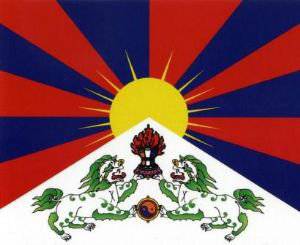 However, the system of financing modernization measures was impressive. Since 1914, new taxes have been introduced in the country - first on salt, skins and wool, then on tea, head-tax, as well as taxes on the ears and nose. The last tax was an unconditional “achievement” of Tibetan theocracy: after its introduction, households had to pay a certain amount in silver for each ear of a person or a pet, and earless people were exempted from tax. The tax on the ears added to the tax on the nose, according to which a large amount was charged to long-nosed people than from flat-nosed ones. Despite the comicity of these taxes, in reality these innovations were hardly liked by the Tibetan population.
However, the system of financing modernization measures was impressive. Since 1914, new taxes have been introduced in the country - first on salt, skins and wool, then on tea, head-tax, as well as taxes on the ears and nose. The last tax was an unconditional “achievement” of Tibetan theocracy: after its introduction, households had to pay a certain amount in silver for each ear of a person or a pet, and earless people were exempted from tax. The tax on the ears added to the tax on the nose, according to which a large amount was charged to long-nosed people than from flat-nosed ones. Despite the comicity of these taxes, in reality these innovations were hardly liked by the Tibetan population. On the other hand, the modernization initiatives of the Dalai Lama XIII were negatively perceived by the conservative part of the high-ranking clergy. When the wind broke the branches of a weeping willow near Jokan Monastery in 1924, and an epidemic of smallpox began in 1925 in Lhasa, the conservative clergy clearly interpreted these events as a response to reforms. The Dalai Lama had no choice but to disband the police, reduce the army and close the secular school, returning to the millennial model of the existence of Tibetan society. However, the Dalai Lama himself was convinced of the need for reform, since he foresaw the possible collapse of Tibetan statehood in the foreseeable future, and it was with the aim of preventing it that he had previously insisted on improving the army and creating the police. He has many prophetic words spoken in the 1933 year: ““ Very soon in this country (with a harmonious combination of religion and politics) there will be treacherous actions, both outside and inside. At this time, if we do not dare defend our territory, our spiritual personalities, including the Victorious Father and Son (Dalai Lama and Panchen Lama) can be destroyed without a trace, the property and power of our Lakangs (residences of reincarnated lamas) and monks can be destroyed selected. In addition, our political system, developed by the Three Great Dharma Lords, will disappear without a trace. The property of all people, high and low, will be taken away, and people will be forced to become slaves. All living creatures will have to eke endless days of suffering and will be permeated with fear. That time is coming. ”
The period of the last seventeen years of the existence of sovereign Tibet - from 1933 to 1950. - characterized by events such as the death of Dalai Lama XIII in 1933, the creation of a regime of temporary regents who were to rule until the search and coming of age of the new Dalai Lama, and periodic wars with Chinese generals on the eastern borders of Tibet. Since the new Dalai Lama XIV Tenzin Gyatso, born in 1935, “discovered” in 1937 as a reincarnation of the previous Dalai Lama and officially elevated to the rank of spiritual leader in 1940, was still a child, Tibet was tormented by incessant political contradictions between aristocrats, claimants who were still a child, and Tibet was tormented by incessant political contradictions between aristocrats, applicants, and the aristocrats, who claimed the spiritual leader. in leading positions at the court of the Dalai Lama. In 1947, the situation escalated to the limit - Regent Ngawan Sunrabon received a parcel with a grenade, armed clashes took place between the people of the regent and supporters of his opponent Jampel Yeshe.
Meanwhile, the Chinese Communist Party gained the upper hand in the civil war between the Kuomintang and the Communists, which had long been tearing apart Chinese territory. The position of the CCP with respect to Tibet remained unshakable - Tibet is an integral historical part of China and will be reunited with the Chinese state sooner or later. It is noteworthy that this position has found its supporters in Tibet. In particular, China was guided by the Panchen Lama IX - the second person after the Dalai Lama to influence the spiritual hierarchy of Tibetan Buddhism and the longtime rival of the Dalai Lama. Back in 1923, as a result of the controversy with the Dalai Lama, the Panchen Lama went to China, where the Kuomintang government appointed him "authorized on western borders." After replacing him after his death, Panchen Lama X, who was 1949 in 10 years, officially welcomed the proclamation of the People's Republic of China (of course, his entourage made this choice).
Joining China
October 7 1950. 40-thousandth units of the People’s Liberation Army of China (PLA) entered Tibet from the provinces of Qinghai and Xinjiang. Naturally, the Tibetan army, consisting entirely of 8500 military personnel, poorly armed and untrained, could not provide full resistance. Moreover, not all Tibetans were inclined to fight, many on the contrary saw in the Chinese expansion a solution to the country's internal problems. More than three thousand Tibetan soldiers and monks moved to the side of the PLA, and on October 11 the whole 9 Battalion of the Tibetan army was in full force. In December 1950, the fifteen-year-old Dalai Lama XIV and his retinue left Lhasa and moved to the monastery Donkar. In parallel, negotiations began on the peaceful liberation of Tibet. Since Tibet was not able to continue armed resistance, and the support of the world powers who were not in a hurry to quarrel with China and the Soviet Union behind it, which had won the war against the Hitlerites five years ago, could not enlist the Tibetan leadership otherwise, how to make concessions to China and agree to the inclusion of Tibet in its composition as an autonomous entity, while maintaining full internal sovereignty.
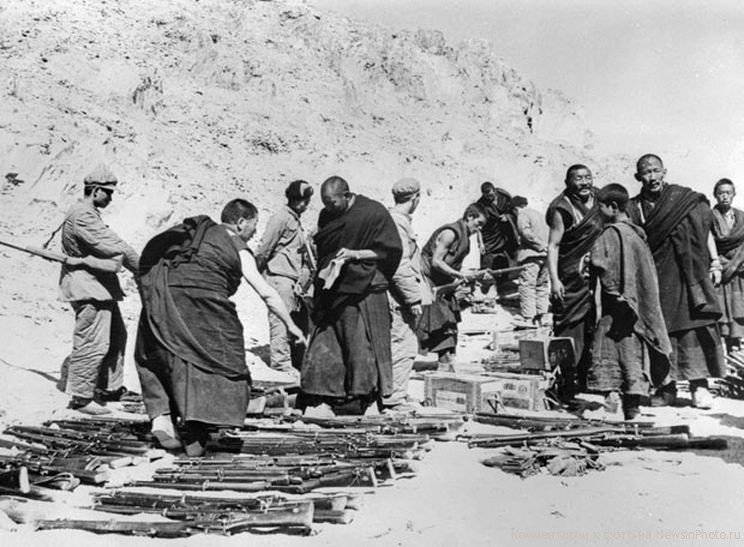
The Tibetan side put forward the following requirements: complete internal independence of Tibet, the absence of Chinese troops on its territory, the preservation of the Tibetan army, the presence of a Chinese representative in Lhasa with no more than 100 security people, and the representative must be a Buddhist by religion. As a result of the negotiations, Tibet made concessions - all military and foreign policy issues were transferred to the competence of the PRC, a military district was created and a PLA contingent was deployed in Tibet. At the same time, China promised to preserve the political and social system of Tibet. 23 May 1951, the agreement was signed. So Tibet became a national autonomous region within the PRC, although for some time after the introduction of Chinese troops it still retained the remnants of internal autonomy. In parallel, the PRC began the creation of the Tibetan national autonomous regions as part of the Chinese provinces of Qinghai, Gansu, Sichuan and Yunnan, where traditionally a significant number of Tibetan-speaking people who professed Lamaism lived.
After the establishment of Chinese power over Tibet, the Dalai Lama led the autonomous region. However, China, of course, did not intend to actually maintain the unshakable state of the political system of Tibet, especially since it did not fit into the framework of the communist ideology that the Chinese leadership was oriented to. Gradually, a significant number of Chinese began to penetrate into Tibet - both military personnel and civilians sent to propagate the communist ideology and atheism. Naturally, this situation did not suit the Tibetan clergy and a large part of the Tibetans, who were under the full influence of the Dalai Lama. On the territory of the ancient provinces of Kam and Amdo, which were now part of the provinces of Gansu and Qinghai, the atheization of the Tibetan population went at full speed, which led to the revolt of believers and the massive outflow of refugees to Tibet, which still enjoyed a certain autonomy. On the territory of the southern regions of Tibet a real guerrilla war broke out. Guerrilla groups of a total of thousands of people in 80 opposed the PLA who were feeding on new people who fled from Chinese repression in the provinces of Gansu and Qinghai.
Guerrilla war in Tibet
10 March 1959 of the year in Tibet on the day of the religious holiday of Monlam a popular uprising broke out, organized by the Kama and Amdos refugees. The rebels seized a number of important buildings and attacked Chinese military and civilian administrative facilities. On March 28, Chinese Premier Zhou Enlai announced that ““ most of the local Tibetan government’s kalons and the reactionary clique of the top of Tibet entered into a deal with imperialism and gathered rebellious gangsters, revolted, injured the people, took the Dalai Lama with them, frustrated the Agreement on Events on the peaceful liberation of Tibet, consisting of 17 articles, and at night the 19 of March led a broad offensive of local Tibetan troops and insurgents on the part of the People’s Liberation Army in Lhasa. ” The uprising continued for 20 days, and 30 March was crushed by the People’s Liberation Army of China. However, in the southern and central regions of Tibet, the guerrilla war against the Chinese authorities continued, which lasted until the end of the 1970-s.
As a result of the suppression of the uprising, 87 thousands of Tibetans were destroyed, 25 thousands were arrested. Dalai Lama XIV and his supporters fled the country to neighboring India, Nepal and Bhutan. A mass exodus of Tibetan believers, mainly representatives of the clergy and aristocracy, from Tibet to other states began. In total, over 1959 thousands of Tibetans emigrated during the year. The Dalai Lama, who settled in India, announced the creation of a "Tibetan government in exile." Thus, the uprising, which pursued the goal of liberating Tibet from Chinese government, in fact turned out to be beneficial to the Chinese authorities. Indeed, after its suppression, the autonomous rule of the Dalai Lama was liquidated, destroyed or expelled from the country by the active core of the anti-Chinese opposition. China received a “wide corridor” for the final modernization of Tibet along the lines of the rest of the country's provinces and the establishment on its territory of a communist ideology and an atheistic world view. On the territory of Tibet, repression began against the Lamaist clergy, as well as the believing population. Monasteries were closed, the monks were either "re-educated" or destroyed. Local authorities that existed before 80 were disbanded, and their functions were transferred to Chinese committees consisting of PLA soldiers and communist-minded Tibetans.
Supporters of Tibet’s independence were counting on help from Western states, but according to Tibetan leaders, it was not provided in the required amount. US intelligence agencies trained small groups of Tibetans in the territory of the state of Colorado and on the island of Sailan in the Pacific Ocean, after which they threw airplanes into the territory of Tibet. In 1960-s. The preparation of Tibetan partisans began in a training camp in the territory of the Kingdom of Mustang in Nepal. However, the detachments of partisans who were thrown into the territory of Tibet, armed with rifles, carbines, mortars, were soon destroyed by superior forces of the Chinese army.
However, the United States did not increase the volume of military aid to the Tibetan partisans, because in reality they were not so much interested in the sovereignty of Tibet, but in the weakening of Chinese positions in the region.
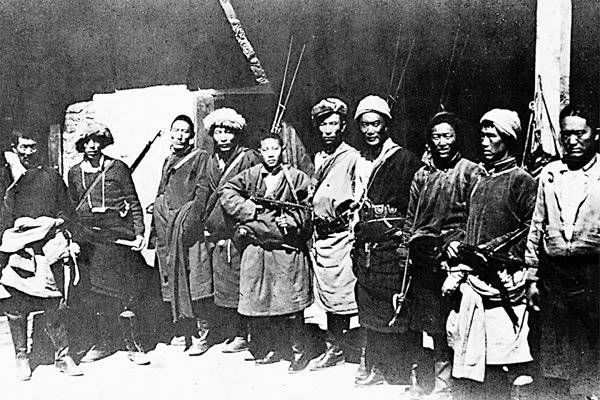
Until the end of 1960's in the south of Tibet, there were thousands of partisans operating up to 30-40; underground organizations in major cities of Tibet continued to function until the 1976 year. However, they no longer represented a real danger to the Chinese Communist Party authorities established in Tibet. In particular, considering that the majority of the Tibetan population over the past years managed to get used to the Chinese government, many Tibetans joined the PLA, made a military and party career, and did not even think about returning the country's former socio-political structure. Gradually, the US CIA’s assistance to the Tibetan partisans was also curtailed, especially after China fell out with the Soviet Union and became one of the key opponents of the USSR in the world communist movement.
However, the suppression of the guerrilla war in Tibet did not mean a final solution to the Tibet issue, as well as the cessation of resistance by the Chinese authorities to the Tibetans. So, in 1987-1989. The Tibet Autonomous Region of China, as 1965 was called Tibet, was shaken by a wave of riots. Starting with a demonstration of monks in Lhasa on September 27 of 1987, the unrest swept not only the territory of the Tibetan region, but also spread to the neighboring provinces of Sichuan, Qinghai, Gansu and Yunnan, which also has a large Tibetan population. As a result of the unrest, from 80 to 450 people died (according to various sources). Another uprising broke out in March 2008, when Tibetan monks took part in a demonstration in memory of the expulsion of the Dalai Lama. A crowd of young people who supported them began to smash Chinese shops and institutions. Killed several people. As a result of the speeches, 6500 Tibetans were arrested, four were sentenced to death. The unstable political situation in the region forced the Chinese leadership to significantly increase the number of prisons and camps in Tibet and the surrounding provinces: in the Tibet Autonomous Region there are 25 prisons and camps, and 32 in the neighboring Qinghai province.
Who benefits the Tibetan question
Stimulation of anti-Chinese speeches in Tibet is carried out primarily by the Dalai Lama XIV and its surroundings. The Dalai Lama, who settled in India, naturally hopes for the return of Tibetan independence, arguing that the Chinese government destroys the culture and religion of the Tibetan people. In many respects he is right - the policy of modernizing Tibetan society really changed Tibet to beyond recognition, eliminated many of the traditional foundations of life of Tibetan society. At the same time, it is difficult to argue that it was during the period of the sixty-year-old Chinese administration of Tibet that the quality of life of the Tibetan population increased many times. Secular educational institutions, enterprises, a modern social and communication infrastructure, and health care were created — that is, everything that the Tibetans were deprived of during the years of independence.
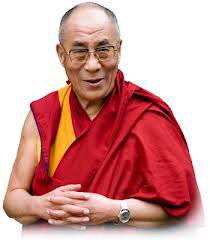 On the other hand, many Tibetans, especially members of the clergy, do not like China’s policy of undermining the role of Lamaism in the public life of the region. These moods play into the hands of several world and regional powers. Firstly, in independence of Tibet, Delhi is interested, since this way out is optimal for creating a buffer state between India and China. Secondly, it is difficult to deny the interest of the United States, one of China’s main geopolitical rivals, to undermine political and social stability in the PRC. Finally, Japan also sees in support of the Tibetan liberation movement the possibility of weakening China’s position in Asia.
On the other hand, many Tibetans, especially members of the clergy, do not like China’s policy of undermining the role of Lamaism in the public life of the region. These moods play into the hands of several world and regional powers. Firstly, in independence of Tibet, Delhi is interested, since this way out is optimal for creating a buffer state between India and China. Secondly, it is difficult to deny the interest of the United States, one of China’s main geopolitical rivals, to undermine political and social stability in the PRC. Finally, Japan also sees in support of the Tibetan liberation movement the possibility of weakening China’s position in Asia. For the collapse of the Chinese state or, at least, its substantial destabilization, the United States will use, first of all, two key instruments of pressure - the Tibet issue and the Uyghur issue. At the same time, the United States, of course, has no interest in creating strong and independent states on the territory of the modern Tibet Autonomous Region and the Xinjiang Uygur Autonomous Region. For these special services, the liberation movements in these territories are only an instrument of pressure on China; therefore, supporting Tibetan or Uyghur oppositionists, the Americans pursue their own goals, although they cover them with arguments about human rights and national self-determination. However, neither the United States nor other states are going to openly quarrel with China, therefore all Tibetan delegations arriving in the United States or Great Britain for support receive an answer that Tibet is part of China, but there is "a concern for human rights in its territory."
The independence movement of Tibet is supported by a large part of the western public. This is due, primarily, to the widespread interest in Buddhism, Tibet and Tibetan culture among the educated segments of the American and European populations. Richard Gere, Harrison Ford, Sting and other world-class media personalities spoke out in support of Tibetan independence. A very large number of Americans and Europeans, and now Russians, have adopted Tibetan Buddhism and recognize the Dalai Lama as their spiritual leader. Accordingly, they support his position, primarily guided by ideological and confessional choices, and not by considerations of sociopolitical expediency and advantageous sovereignty of the Tibetan people themselves.
The ideas of the American and European public about Tibet are largely based on the romanticization of life in this country before being included in the PRC. Tibet is depicted as a mythical fairy-tale country without violence, ruled by wise Buddhist lamas, although such idealization is very far from reality. At least, the Russian-speaking sources of travelers who visited Tibet in the early twentieth century (and these are the memories of the Buryat Gombozhab Tsybikov, the famous orientalist Yuri Roerich, son of the not less famous artist Nicholas Roerich) testify to the social backwardness, poverty of the majority of the population, the cruelty of the authorities in the then sovereign Tibet. The denial of China’s real merit in providing the Tibetan population with modern social benefits, including access to education and health care, the eradication of slavery and feudal relations in the region is either a consequence of ignorance or a deliberate distortion of facts. Moreover, the massive support in the West of the Tibetan independence movement in reality only condemns the region to a tightening of China’s domestic policy, for which the position of the Western public in Tibet is evidence of the commitment of the Tibetan independence movement by the Western powers and their special services.
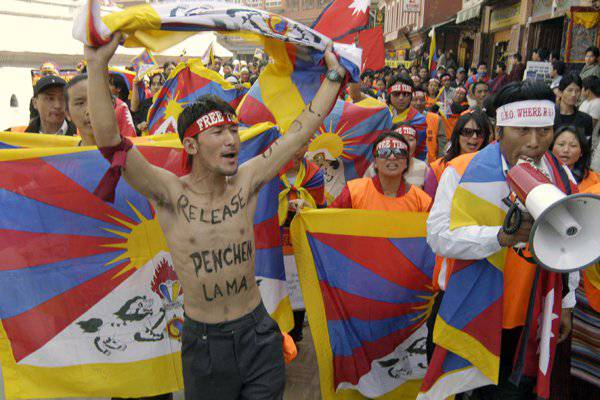
As for Russia's position on the Tibetan issue, it should be remembered that Russia is a neighbor and strategic partner of the PRC, which prompts the Russian leadership to maintain distance from the Tibetan national movement. So, the Dalai Lama was regularly denied permission to visit the territory of the Russian Federation, although in Russia in three republics - Kalmykia, Buryatia and Tuva, as well as in the Irkutsk and Chita regions - a significant number of Buddhists live - representatives of the indigenous population of these regions. The Gelugpa school of Buddhism, of which the Dalai Lama is the head, is recognized as one of the four traditional denominations of the Russian Federation. Naturally, the Buddhists of Russia have the right to contemplate their spiritual leader, but permission to enter the Dalai Lama in the country can complicate relations with the PRC and Moscow perfectly understands these consequences.
Obviously, the Tibetan issue needs a political solution, since any other outcome will bring only grief and suffering to the Tibetan people and other peoples of the region and in no way will contribute to the true prosperity of this ancient land. Since the history of relations between China and Tibet has more than a thousand years, we can say that the Tibet issue in its current form is only one of the stages of centuries-old communication. Probably, the harmonization of relations between Tibetans - supporters of the traditional model of development, and the Chinese government would come much faster if the American, British, Indian authorities did not aggravate the situation, actually feeding and stimulating the destabilization of the political situation in Tibet.
Information